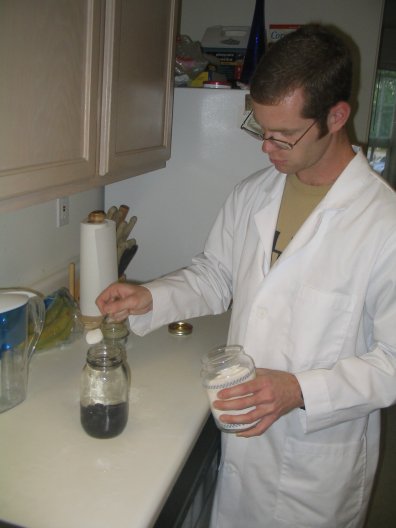Last night, we conducted taste tests of our three ongoing infused vodka experiments. We began with the most recent, strawberry-vanilla vodka, which had infused for five days.

As with our previous strawberry experiments, the vodka drew out most of the strawberries' color, leaving a bright red vodka and pinkish-white berry slices. The split vanilla bean had no noticeable effect on the color.
Since our strawberry vodka is easily masked in cocktails, we expected the vanilla flavor to slightly overpower the strawberry. In truth, the opposite occurred. "The strawberry flavor is even stronger than in the regular strawberry vodka," Wayland noted. "The vanilla is a little faint."
We think that the difference is in the quality of the strawberries. Since they are now in season, the berries are fresher and more flavorful than the ones we have used previously, leading to a stronger infusion. In fact, even the color is richer, seen in this side-by-side comparison of our previous batch of strawberry and the new strawberry-vanilla.

We considered letting it infuse longer, but since vanilla is a very time-sensitive infusible, we decided to err on the side of a lighter flavor than too strong of one.
Next, we sampled the
blueberry vodka, which has been ongoing for two weeks. The blueberries have imparted almost no color on the vodka.

Likewise, they have not imparted any flavor either. All of our early research stated that infused berries (excepting strawberries) should be left whole; however, this experiment, along with our
grape vodka experiment, seem to disprove this hypothesis.
Rather than removing the blueberries and bruising them by hand, we decided it would be more efficient to haphazardly crush them in the jar. However, it took some trial and error to find the proper implement for the task. I began with a metal whisk.
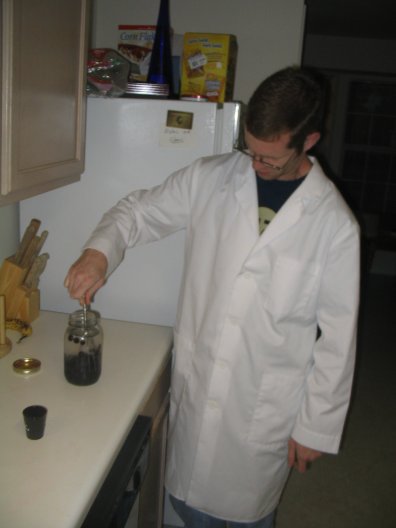
The whisk was completely ineffective. The berries simply slipped between the wires, escaping any direct force. Next, I tried using the flat-ended handle of a plastic rice spoon.

This should have worked, but for one weakness: the handle wasn't long enough. The wide section stopped at the mouth of the jar, leaving a mere half inch of space under the handle, just enough for the berries to avoid damage.
Wayland then retrieved a long bread knife with two prongs on the end. This did the trick nicely.
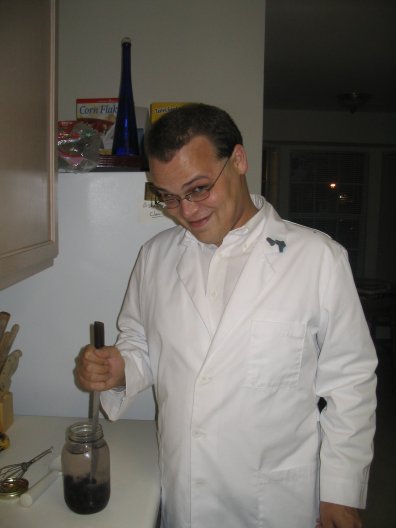
The effectiveness of rupturing the blueberries was seen within moments, as the vodka began to attain a purple hue.
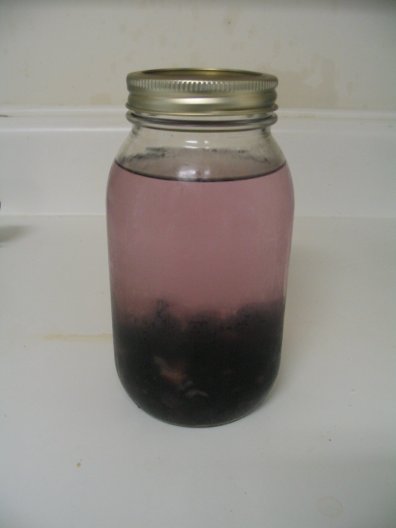
We'll try it again in a week, now that it is truly infusing.
Lastly, we sampled the
almond vodka experiment for the second time. This infusion has been running for three weeks. Similarly to the blueberry experiment, the almond vodka had little flavor in the
first tasting, so we crushed the almonds a bit. That was about a week and a half ago. Now, the vodka is very cloudy, though much of this is dust that probably ought to be filtered out.
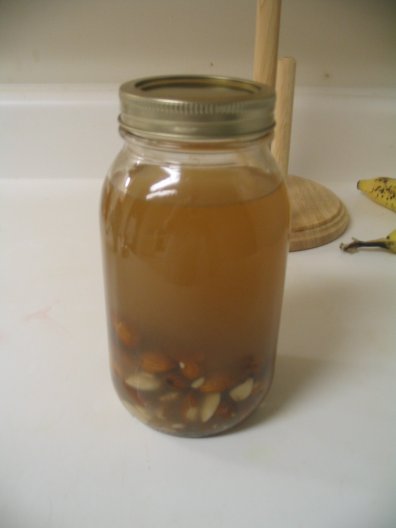
We chilled a sample and filtered it through cheesecloth before tasting. The flavor is much stronger now than it was previously, though it has yet to reach its full potential. We fear that this will be another long-term infusion, like the
coconut vodka, but we will continue to sample it and keep you updated.




























